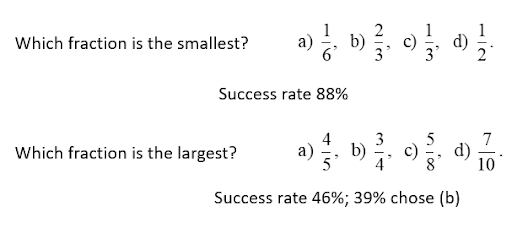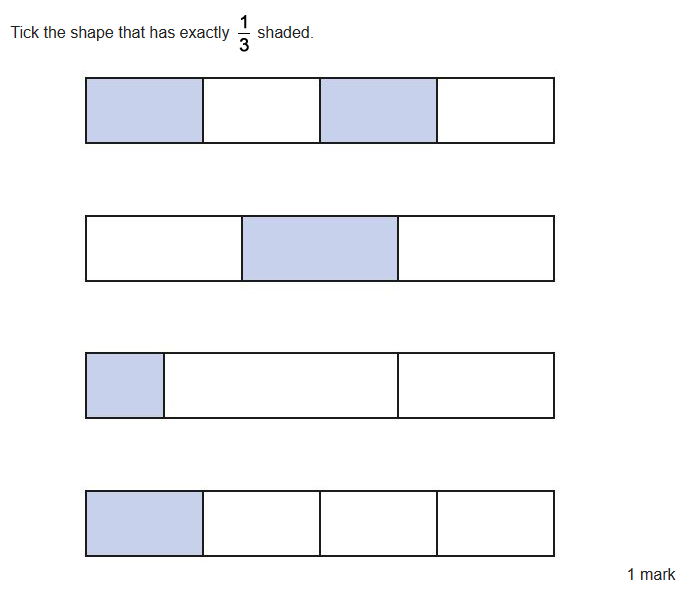Adam Kohlbeck, Deputy Headteacher and co-founder of EduPulse
Multiple-choice questions can evoke a broad and mixed range of responses from teachers and school leaders whenever they are considered as part of lesson activities or to gauge understanding. The arguments against focus on the fact that pupils could theoretically mask a lack of understanding with a lucky guess. Or, they could use logic and the process of elimination to work out what the answer must be without any understanding of why it is so. However, a carefully crafted multiple-choice question – one that is well-placed within the learning sequence, and has well-designed, deliberate distractors, can be of undoubted value to teachers.
Where is the right place in a teaching sequence for a multiple-choice question? Whilst they could be used literally anywhere in a sequence, they have particular use at the point in a sequence where crucial differences are being drawn between prior knowledge and new content, or between two concepts that are closely related and similar, particularly on a surface level. This is exemplified excellently by Daisy Christodoulou (2013) in her blog post which you can access here. She gives the example of the question: How did the Soviet totalitarian system under Stalin differ from that of Hitler and Mussolini? This is obviously not pitched at primary level but highlights the point well. As renowned dictators, there are obvious similarities between the systems imposed by all three leaders which could indicate to learners that their regimes are all the same. However, this would represent a fundamentally superficial or under-developed understanding. By restricting or limiting the answers, teachers can efficiently elicit the nuance of understanding that the learner has on the subject matter, in this case the fundamental differences between the three dictators. It is crucial that before moving on to more complex content, the teacher knows which pupils hold this under-developed understanding and any misconceptions in their learning. This is where the term ‘hinge’ comes in. Evidence Based Education describes a hinge point as being the point in a lesson or sequence where the teacher must decide whether to move on or go back over content. A hinge question therefore provides the teacher with the necessary information to make this decision.
Hinge questions when asked in an open format are useful. For example, a teacher may ask a pupil, “How should I decide which of these two fractions is the greater?” This would elicit a verbal explanation of process, during the course of which, pupils would reveal their understanding (or lack thereof) of the concept. However, this style of hinge questions is problematic because of the time it would take the teacher to hear from every pupil and then decide if the time was right to move on or if further teaching were needed. This is without considering the other obvious issue that pupils could copy the response of others.
A quick and efficient method for assessing the level of pupils’ understanding of the learning is essential for teachers. To achieve this, teachers could provide an example of a question to test out pupil understanding and then assess responses on mini white boards. For example, “Which is greater? 2/3 or 2/5.” Answers to this question will give the teacher some useful, top-level information but not the level of detail that they need to make their decision about whether to move on or not. The fractions both have the same numerator which means that pupils would only have to know that a larger denominator will indicate the smaller fraction. To improve the question, we should include options that are less obviously different. William, (2015) citing Vinner, (1997) offered these two contrasting examples and indicated how success rates can fluctuate considerably when plausible alternatives to the correct answer are offered.
Sherrington and Stafford (n.d.) wrote ‘The most effective hinge questions go beyond simple recall, combining concepts and challenging students to apply ideas.’ Part of applying ideas is the potential to misapply them, and in so doing, expose a misconception. Therefore, when utilising multiple choice as the question style at hinge moments in learning sequences, teachers should ensure that they build in what Sherrington and Stafford go on to refer to as ‘plausible detractors’. These are alternative answers that appear to be potentially correct. Even more effectively, teachers could choose to include detractors that expose precise misconceptions that they want to pre-empt because they know from past experience (or the advice of more experienced colleagues) that they are particularly common. For example, consider the options provided for the Testbase question below:
Option B is the correct answer but let us imagine a pupil who does not nominate any of the options. This would indicate a misconception about fractions of uncommonly seen shapes. If option C were to be selected, this would indicate a misconception around the need to have equal parts in any fraction. Option D would indicate a misconception about the role of the denominator and option A would suggest a misconception around the role of the numerator value when comparing fractions.
Examples from across a full range of subject domains exist (and widely available with a Testbase subscription). Additionally, Harry Fletcher-Wood writes extensively on the topic. You can navigate to a number of his blog posts from here.
While multiple-choice questions designed with little thought and planning related to plausible detractors are unlikely to produce any assessment data to inform teachers’ formative inferences, by choosing the right moment – the hinge moment – in the learning sequence and by designing multiple-choice questions that reveal pupil understanding of the hinge knowledge, we can increase the value of the data we get from asking them. To really supercharge our use of multiple-choice hinge questions, teachers should pay careful attention to the selection of plausible detractors as incorrect answers. Doing so will reveal vital insights about specific misconceptions held by pupils and armed with that information, teachers know not just whether or not they can move on but, if they can’t, they also have a good idea of exactly where to pitch their intervention to move pupil understanding.
References
- Christodoulou, D. (2013, October 30). Research on multiple- choice questions. Daisy Christodoulou. https://daisychristodoulou.com/2013/10/closed-questions-and-higher-order-thinking/
- Evidence Based Education (n.d.). Assessment and feedback in an online context: Hinge questions. Chartered College of teaching. https://my.chartered.college/wp-content/uploads/2020/04/EBE3-1.pdf
- Fletcher-Wood, H. (accessed 2024, April 4). Hinge questions hub. Improving teaching. https://improvingteaching.co.uk/hinge-questions-hub/
- Sherrington, T. and Stafford, S. (n.d.). Catch out misconceptions with multiple-choice hinge questions. Impact. https://my.chartered.college/research-hub/catch-out-misconceptions-with-multiple-choice-hinge-questions/
- Wiliam D (2015) Designing great hinge questions. Educational Leadership: Journal of the Department of Supervision and Curriculum Development 73: 40–44.
Follow our social media channels for more education news, CPD and support on getting the most from your Testbase subscription:


